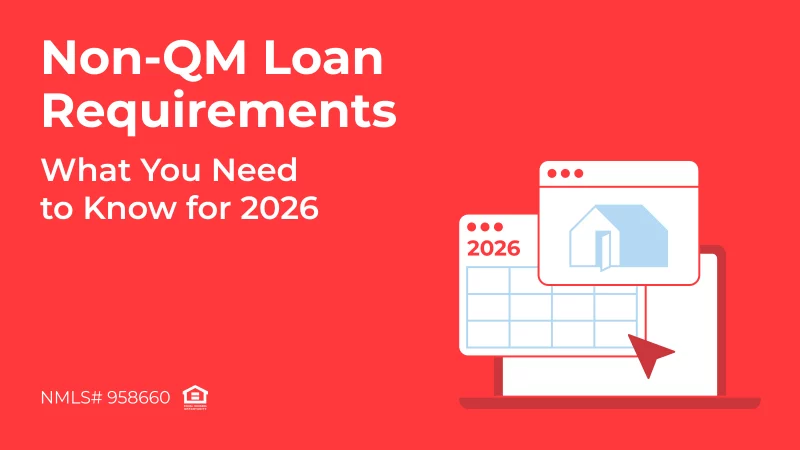
As a mortgage broker, you help people turn house keys into a home sweet home. But what happens when that dream becomes a nightmare? When the bills pile up and the mortgage looms large, fear and uncertainty can take hold. This is where you can lend a helping hand. Your clients need more than just paperwork pushed through. They need a real person who understands their struggle and can offer a way out. That way out often involves loss mitigation measures like loan modifications and forbearance. These aren’t just fancy financial terms. They’re lifelines for homeowners drowning in debt.
Get the ADvantage
with our loyalty program
Earn and redeem points for valuable benefits for you and your clients
Unlock RewardsA loan modification is like restructuring a mortgage payment plan to make it fit the borrower’s new financial reality. Forbearance, on the other hand, is like hitting a temporary pause button. It gives people breathing room to get back on track. Understanding both options and the difference between them is critical for you. It’s not just about knowing the details, it’s about feeling the impact. When you truly grasp it, you can become a hope for your clients. You’ll be able to spot the signs of trouble early, offer real solutions, and prevent foreclosure. Let’s look into the detailed forbearance vs. loan modification comparison, the advantages and disadvantages of each option, and how you can assist clients with these solutions.
Understanding Loan Modifications
A loan modification is a change in the terms of a loan. It’s like renegotiating a contract to make things work better for a borrower. This can be a lifeline for homeowners struggling to keep up with their mortgage payments. When might your client need a loan modification? Usually, it’s when they’re facing financial hardship, like a job loss, medical bills, or a big drop in income. The mortgage lender may agree to change the terms of your client’s loan if they think there’s a good chance they can start making payments again once their situation improves.
There are a few main ways lenders can modify a loan. One is by lowering the interest rate on the existing mortgage. This means a borrower will pay less each month, making it more manageable to keep up with mortgage payments. Another way is to extend the term of the loan. This stretches out the loan over more years, lowering your client’s monthly payment but increasing the total interest paid over the life of the loan. Finally, lenders can consider reducing the principal amount – the total amount a borrower owes. This can also lower their monthly payment. This is less common and often used in situations where the borrower is facing significant financial hardship.
Choose a top nationwide lender that cares about your growth!
Get StartedSo, what are the good things about loan modifications? The biggest benefit is that it can help your client avoid foreclosure – programs like the Home Affordable Modification Program (HAMP) have shown that loan modifications can significantly reduce the risk of foreclosure. Staying in their home is huge. Plus, it can lower monthly payments, giving a borrower some breathing room in their budget and the opportunity to regain financial stability.
However, there’s another side to this story. Loan modifications aren’t a magic solution. A loan modification might offer temporary breathing room, but it often stretches the life of the loan, meaning clients are locking themselves into a longer financial commitment. The relief is real, but so is the cost – potentially higher interest payments over time that can erode any immediate savings. It’s also important to understand that loan modifications can negatively impact a borrower’s credit score – lenders may report the modification as a “loan modified under agreed terms.” What’s more, effectiveness can vary depending on the size of the modification and the homeowner’s overall financial situation. Lastly, the process of getting a loan modification can be long and stressful.
Understanding Forbearance
Forbearance is like having a short-term mortgage payment relief when a borrower is facing financial trouble. It’s like buying time to get back on track. Your client may qualify for forbearance if they’re dealing with a tough situation, like losing their job, a medical emergency, or a natural disaster. It’s important to remember that forbearance isn’t a permanent solution, but it can be a lifesaver in the short term. For example, during the COVID-19 pandemic, forbearance played a critical role in providing short-term relief to borrowers facing financial difficulties, said Rick Sharga, president of CJ Patrick Company and a leading data analyst of the mortgage industry.
Statistics about Forbearances
Sharga recently reviewed the Mortgage Bankers Association’s Monthly Loan Monitoring Survey, June 30, 2024. He shared his insights for this blog on the current state of forbearance programs:
- Roughly 8.2 million borrowers have entered the forbearance program since its inception in March 2020.
- The percentage of mortgages in the forbearance program ticked up for the first time in many months in June, from 0.21 to 0.23.
- Of those, loans in the Ginnie Mae pool have the highest percentage of loans in forbearance. 0.44% of Ginnie Mae loans are in forbearance, 0.31% of portfolio/PLS loans, and only 0.11% of Fannie Mae and Freddie Mac loans. All of those percentages are slightly higher than they were in May.
- Since the beginning of the program, a certain percentage of borrowers in forbearance have remained current on their loans even though they’re allowed to miss payments. At the end of June, just over 13% of borrowers in forbearance continued to make on-time payments.
- One of the most interesting trends is how dramatically the reasons for borrowers to be in forbearance have changed. This program was established to help prevent foreclosures among borrowers whose income was impacted by the COVID-19 pandemic. So virtually 100% of the borrowers in the program were there due to COVID. Today, only 7.9% of the borrowers in forbearance are there for COVID-related reasons. Another 16.2% are there due to natural disasters, and the remaining 75.9% are there due to “temporary hardships.” So, it appears that servicers may be using this forbearance program as a sort of catch-all for borrowers having trouble making their payments. However, it is not what it was designed to be originally.
- This shift appears to have begun in the late summer of 2021. Back then, the percentage of borrowers in their initial forbearance period bottomed out at around 10%. Borrowers in an extended forbearance period peaked at over 80% (this, by the way, is exactly how the program was designed to work: borrowers were given an initial forbearance period, and then had to request extensions, which could last up to two years). Since then, the percentage of borrowers in their initial forbearance period has climbed steadily, reaching over 59% at the end of June – with most of them entering due to reasons other than COVID. Borrowers on extension make up a little over 21%, and another 19% have re-entered the program after previously exiting.
- The bottom line on this program, however, is that it has been an extraordinary success in achieving what it set out to do: preventing unnecessary foreclosures due to the COVID-19 pandemic.
All told, the MBA estimates that just over 120,000 borrowers remain in the program today, down from a peak of over 4 million in the spring of 2020. In Sharga’s estimation, the program has probably prevented at least 3-4 million borrowers from facing foreclosure over the past four years.
How Do Forbearances Work?
The mechanics of forbearance are relatively straightforward. The lender agrees to temporarily suspend or reduce mortgage payments for a specific period (typically up to 6 months). During this time, interest may or may not continue to accrue, depending on the forbearance plan. At the end of the forbearance period, the borrower must resume payments and typically repay the deferred amount through options such as a loan extension, lump sum payment, or repayment plan.
The good news is that forbearance can prevent foreclosure while your client works through their problems. It can also help them avoid late payment fees and significant damage to their credit score. But, there’s a catch. As Seamus Nally, CEO of TurboTenant, notes, “However, though forbearance temporarily pauses or reduces loan payments, those regular payments will resume.” This means that a borrower doesn’t escape their mortgage during forbearance. The amount they pause or reduce is added to the end of the loan, so they’ll end up paying more interest over time. This can blindside homeowners who thought they were just buying time.
Also, forbearance doesn’t solve the underlying financial problem. Post-forbearance periods can be financially challenging. The need to repay missed payments on top of regular payments can strain finances, especially if the homeowner’s financial situation hasn’t improved significantly. And let’s not forget the impact on credit. Even a well-structured forbearance agreement can send up red flags on a client’s credit report, affecting their ability to borrow in the future. What’s more, missed payments that result in forbearance can damage your client’s credit. Additionally, failure to meet the terms of repayment post-forbearance can lead to negative credit reporting.
Comparing Loan Modifications and Forbearance
While both measures offer some relief to struggling homeowners, they’re different solutions to turn to in different situations.
As mentioned above, a loan modification is a permanent change to the terms of the mortgage, like rewriting the contract. Forbearance, on the other hand, is a temporary pause allowing borrowers to stop or reduce their mortgage payments for a specific period.
So, when should you recommend one over the other? If a borrower is facing a long-term, ongoing financial hardship, a loan modification may be the better option. It provides a sustainable solution by adjusting the loan terms to fit their situation. However, the process can be lengthy and isn’t guaranteed.
For borrowers facing a sudden financial crisis or experiencing a temporary financial setback, forbearance may be more suitable. It offers immediate mortgage payment relief, but as we’ve already mentioned, it doesn’t address the underlying financial issue. The borrower will still need to resume making payments once the forbearance period ends.
Both options can impact a borrower’s credit score. While forbearance might have a less severe impact, it’s important to remember that any missed or reduced payments will appear on their credit report. Loan modifications can also affect credit scores, but the overall impact depends on the new loan terms.
In order to find the best path forward during a financial hardship, it’s important to evaluate each client’s unique situation.
Forbearance vs. loan modification summary
| Feature | Loan Modification | Forbearance |
|---|---|---|
| Nature of change | Permanent | Temporary |
| Impact on payment | Lower monthly payment | Suspended or reduced payments |
| Impact on loan term | Extended | No change |
| Impact on interest rate | Lowered | No change |
| Impact on principal | Reduced | No change |
| Best suited for | Long-term financial hardship | Short-term financial crisis |
| Credit impact | Can negatively impact credit | Less severe impact on credit |
| Complexity | Complex process | Simpler process |
How Mortgage Brokers Can Help
Mortgage brokers are often the first line of defense for homeowners in financial distress. Your understanding of loan structures, lender policies, and borrower needs is invaluable in loan modifications and forbearance.
To determine the best course of action for a client, you must carefully assess their financial situation. This involves gathering detailed information about income, expenses, and the cause of the financial difficulty. By understanding the root of the problem, you can better determine whether a loan modification or forbearance is the most appropriate option.
Once you’ve gathered the necessary information, it’s time to evaluate the pros and cons of each option and explain them to your client. Consider factors such as the severity of the financial crisis, the borrower’s ability to resume payments, and the potential impact on their credit score. Pay close attention to the eligibility criteria. For a loan modification, borrowers typically must demonstrate financial hardship (e.g., job loss, medical expenses) and show that they are unable to make current mortgage payments but can meet modified payment terms.
Forbearance requires proof of a temporary financial hardship, such as job loss, illness, or natural disaster, and a demonstrated ability to resume payments after the forbearance period ends. Also keep in mind that the lender’s decision is influenced not only by the borrower’s financial situation but also by the amount owed on the loan relative to the value of the property, as well as their payment history prior to the hardship.
It’s important that your client is prepared to provide documentation throughout the process. Lenders require specific paperwork to approve a loan modification or forbearance. This may include proof of income, bank statements, tax returns, a letter explaining the hardship, and a detailed budget of income and expenses (for loan modifications); medical bills, layoff notice, current financial statements, and sometimes proof of intent to regain financial stability (for forbearance). Your attention to detail in helping to organize these documents can greatly increase the successful outcome.
Moreover, understanding mortgage assistance programs and the specific requirements of different lenders is crucial. Guidelines and eligibility criteria vary, so knowing which lenders are most likely to approve a loan modification or forbearance can save time and frustration.
It’s also important for a mortgage broker to understand and help overcome the challenges homeowners face after a loan modification or forbearance. People struggle with adjusting their budgets to new payment plans. Moreover, they often feel overwhelmed by the complexities of their new loan terms. This confusion can lead to poor financial decisions. As a mortgage broker, you can break down the complicated details into easy-to-understand terms, explore refinancing options, and help create a budget that works. But it’s not just about the numbers; the emotional toll of financial instability can be significant, leading to delays in making important decisions. This is where you can offer support and guidance to help your clients feel more confident about their financial future.
AD Mortgage’s Role and Services
As a Top 10 Wholesale Lender with nearly 20 years in the industry, a robust network of over 6,000 broker partners, and a full range of loan options for homebuyers across the credit spectrum – from A to D, at AD Mortgage, we dare say we’ve seen it all. Like no other, we understand the challenges borrowers can face during times of financial hardship and the role of mortgage brokers in overcoming them. That’s why we offer a range of services to assist both brokers and borrowers in loss mitigation matters.
Enhanced Broker Portal
that makes your job easier
- All operations at your fingertips
- Easy-to-use intuitive interface
- Integrated AI technology
For brokers, AD Mortgage provides a streamlined approach to handling loss mitigation requests. Our online portal allows you to easily submit documentation and track the progress of your client’s case. You’ll have a dedicated contact person at AD to answer questions and provide updates throughout the process.
For borrowers facing financial difficulties, AD Mortgage offers a compassionate and understanding approach, says Servicing Manager Satish Vishwakarma. We review the documentation provided and take the time to understand their unique situation and explore all possible solutions. We understand that options like forbearance and loan modification can be difficult to qualify for due to strict eligibility criteria. This is why we offer other loss mitigation solutions like mortgage repayment plans. These often can be a more accessible alternative. They allow homeowners to gradually catch up on missed payments by adding a little extra to their regular mortgage each month. This can be a much easier way to get back on track financially. Our goal is to help borrowers stay in their homes and achieve long-term financial stability.
Beyond paperwork
Our support goes beyond just paperwork. We understand that communication is key during times of financial hardship. We work collaboratively with brokers to clearly explain the options available to their clients. This way, we ensure that all parties are on the same page and informed decisions can be made.
Our team is always available to answer questions and provide support. We believe in fostering strong relationships with brokers, building a collaborative environment that benefits everyone involved.
Conclusion
When homeowners are struggling to make their mortgage payments, you can become their hope by offering loss mitigation options. Understanding the loan modification and forbearance comparison isn’t just about knowing the details. Instead, it’s about knowing how they can help real people in real trouble. It’s about looking beyond the numbers and seeing the person behind the mortgage. You’re not just processing paperwork; you’re offering a lifeline. By taking the time to understand your client’s situation, clearly explaining their options, and working hard to get them the best possible outcome, you’re doing more than just a job. You’re making a real difference in their lives. It’s about helping people keep their homes, protect their credit, and get back on their feet. That’s the kind of impact you can make as a mortgage broker.
For more information on mortgage payment relief options, contact AD Mortgage today. Our team is ready to provide expert assistance and support to help you find effective solutions for your clients.


